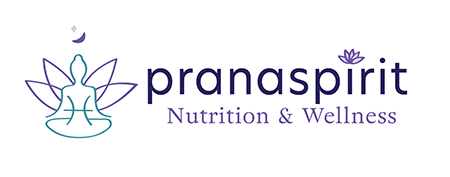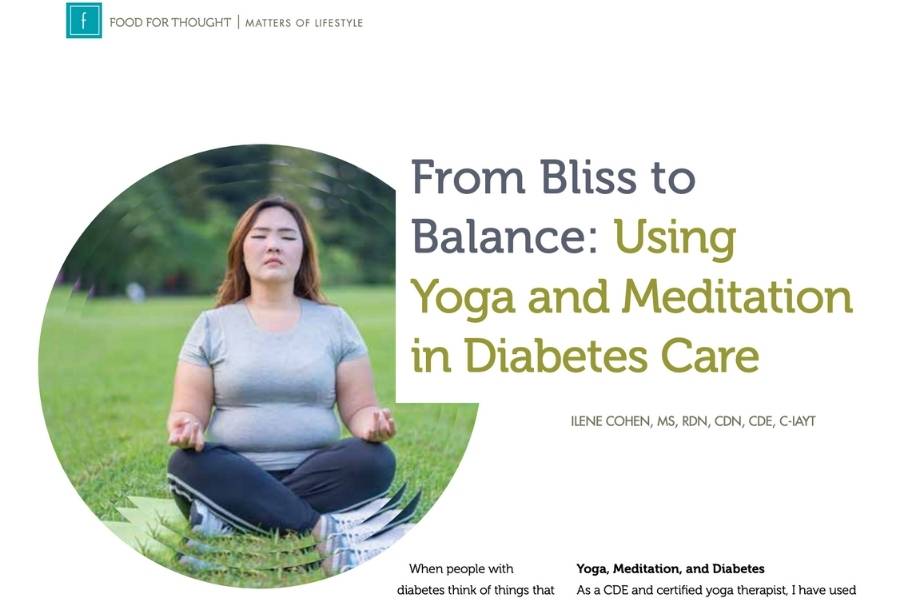Originally published in AADE In Practice Magazine, March 2019
When people with diabetes think of things that raise their blood sugar, they first think of carbohydrates. They often don’t consider other factors that can cause hyperglycemia, such as stress. One job we have as diabetes educators is to guide patients in understanding the effects of these other factors on blood glucose levels, which can help educate and motivate them to take control of and successfully manage their diabetes.
A holistic approach to diabetes management involves listening to patients talk about how stress and other factors affect their lives and diabetes self-management. Within the motivational interviewing model, diabetes educators can
explore solutions with their patients and expose them to options that they may not be familiar with, such as yoga and meditation.
The goal of this article is to provide diabetes educators with tools that they can take right into the office to help their patients. I discuss 3 different tools and types of yogic meditation that diabetes educators can practice for themselves and recommend to their patients.
Yoga, Meditation, and Diabetes
As a CDE and certified yoga therapist, I have used yoga and meditation in my practice for years, and my patients with diabetes have benefited in several areas of challenge, including reducing emotional eating patterns, improving blood glucose control, and losing weight through mindful eating practices.
According to a survey of yoga in America conducted through the Yoga Alliance in 2016, 37.7 million people in the US are practicing yoga, and 34% say that they are likely to practice in the next 12 months. An astonishing 56% of those surveyed practice yoga or meditation for stress relief. But that is not all; research shows that meditation has improved emotional eating patterns and blood glucose levels.
A 2018 study in the International Journal of Yoga found a significant decrease in blood glucose, A1C, and fasting serum insulin levels in 60 patients with coronary artery disease who practiced meditation compared with those who did not. Results of a review of 14 studies suggest that mindfulness meditation decreases emotional eating and binge eating behaviors in those who practice.
Results of a review of 14 studies suggest that mindfulness meditation decreases emotional eating and binge eating behaviors in those who practice.
All of these data offer tremendous promise and support for encouraging our patients to develop a yoga and meditation practice. So let’s get started with my top 3 meditation tools.
Tool 1: Meditation Apps
Many patients love apps, and diabetes educators love recommending them as tools if they can be helpful! Here are my top choices for meditation apps (all have free versions).
- Calm. This is an app that provides the 7 Days of Calm, a free introduction to mindfulness meditation. Download the app to your iPhone or Android to use it with your patients in the office. Have them sit up tall, close their eyes if they feel comfortable, take some breaths, and tune inside.
- Headspace. This app consists of hundreds of meditations that deal with stress reduction, sleep, and more. It’s great for people interested in beginning a regular practice as it guides the user with daily short meditations. While there is a subscription, the app also has a free basic version.
- Insight Timer. This app offers a free course called “Learn How to Meditate in Seven Days.” It also has 10 000 meditations to choose from in different categories, including sleep, recovery and healing, stress and anxiety, and Yoga Nidra for sleep.
Tool 2: Yoga Nidra
Yoga Nidra is a tantric yoga practice, meaning that is a practice of the Buddhist and Hindu scriptures that originated in India. It allows for a deep state of relaxation and subconscious awareness known as a hypnagogic state. Nidra means sleep in Sanskrit, the ancient Indic language used in yoga texts. Yoga Nidra incorporates body scan meditations and guided imagery to induce the relaxation response and guide the individual into a state of profound relaxation.
Studies conducted between 2009 and 2018 have shown that Yoga Nidra leads to significant improvements in conditions including diabetes, PTSD, pain management, heart rate variability, and insomnia.
You and your patients can experience a Yoga Nidra practice in a few accessible ways. To find a good Yoga Nidra workshop or class, search online for any of the following must-haves: a yoga studio with instructor bios stating that they have at least 1 year of yoga and Yoga Nidra teaching experience, the credential C-IAYT indicating that they are a certified yoga therapist from the International Association of Yoga Therapists, and/or the designations RYT or E-RYT indicating that the teacher is a registered with the Yoga Alliance of America.
Tool 3: Mindful Eating Meditation
Mindful eating involves connecting with our 5 senses—sight, feeling, hearing, smell, and taste. If we practice connecting to all of our 5 senses, we can be truly present. Mindful eating can help you slow down, be present, and connect with your body.
The Orange 5 Senses Meditation shown below is a mindful eating exercise you can try for yourself and with your patients. Start by sitting tall in a comfortable position with your feet pressing flat into the floor and your spine supported. You want to be erect but not stiff or straining.
Follow the 5 steps to experience eating an orange in a whole new way. You can continue a mindful eating exercise for as long as you’d like, eating sections of an orange or bites of another food until you finish. You may also pause along the way to notice how hungry or satisfied you feel. Give it a score on a scale of 1 to 10, with 1 being extremely hungry and 10 being extremely full. You can practice this exercise at any meal or snack to help you slow down and truly experience the foods you eat, the act of eating, and your satiety.
Summary
Many people with diabetes don’t initially make the connection between mind-body practices, like yoga and meditation, and managing diabetes. We as diabetes educators can play an important role in teaching, guiding, and supporting patients interested in trying new self-management tools and approaches that fit their lives and needs.
It’s helpful to try practicing meditation or yoga techniques on your own first. You may help your patients best if you first have your own direct experience. I encourage you to try them and develop your own practice. A meditation practice does not need to be advanced. It does not need to take a certain amount of time. Even 5 minutes per day of meditation can have a profound effect on well-being. By helping patients to have an experience, we can support them in exploring and embracing solutions that work for them.

ORANGE 5 SENSES MEDITATION
- Take a peeled orange and hold it in your hands. Notice what you see. Sense the color of the orange, notice its deep orange and the white parts of the outside. Sense the shape of the orange—is it round with slightly narrowed ends? What about the texture—is it rough or smooth?
- Close your eyes here and notice how the orange feels on your fingers. Sense the temperature—is it warm or cool? Do you feel the stickiness of the juice on your fingers? What about the texture—is it smooth or can you feel the ridges?
- Now break apart 1 piece of the orange and bring it to your nose, notice how it smells. What words come to mind as you inhale and smell the piece of fruit. Is it fresh smelling and citrusy? Fragrant and flowery? What food or beverage recipe comes to mind with the smell?
- Now open your mouth to place a small piece of the orange in your mouth and on your tongue. Start to chew and notice how this orange tastes. Is it bitter, sweet, or sour? A combination? Does the orange taste different now than an orange has tasted in the past? As you continue to bite and chew, does the taste change?
- As you continue to chew, notice what you hear—the sound of your chewing, the sound of your saliva and teeth biting into the orange. While you notice these sounds, take note of any outside sounds around you. Now as you start to swallow, notice the sound of your swallowing.





